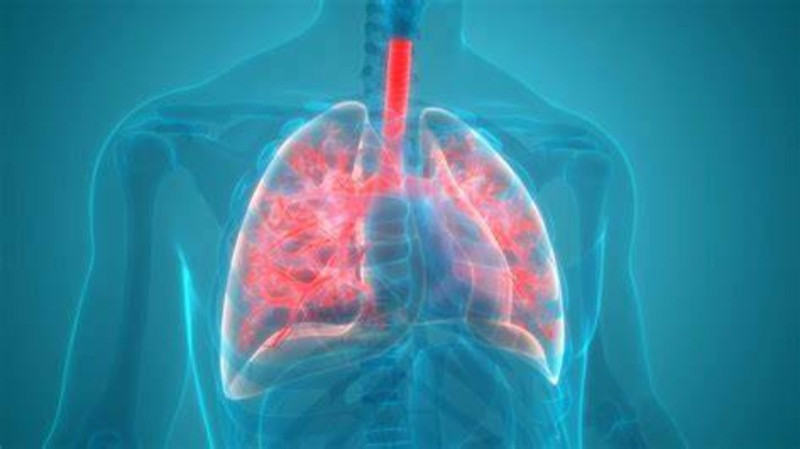What is White Lung Pneumonia?
White lung pneumonia is not an official medical term or a new disease. It is simply a descriptive term used when chest X-rays show white patches in the lungs, which is a common finding in pneumonia caused by various viral, bacterial, or fungal infections.The white areas on the X-ray indicate inflammation and fluid accumulation in the lungs, which is typical of pneumonia. Healthy lung tissue appears black on X-rays due to the air content.Pneumonia can be caused by a variety of pathogens, including:
- Viruses like influenza, respiratory syncytial virus (RSV), and SARS-CoV-2 (the virus that causes COVID-19)
- Bacteria such as Streptococcus pneumoniae and Mycoplasma pneumoniae
- Fungi in some cases
The severity of pneumonia varies, with many cases being mild and manageable at home. However, pneumonia can be serious, especially in young children, the elderly, and those with weakened immune systems.Symptoms of pneumonia include cough, fever, fatigue, chest pain, and difficulty breathing. If symptoms persist or worsen, it is important to seek medical attention.Treatment depends on the underlying cause and may involve antibiotics for bacterial pneumonia, antiviral medications for viral pneumonia, or antifungal drugs for fungal infections. Supportive care, such as over-the-counter medications for fever and pain, is also important.To prevent pneumonia, it is recommended to get vaccinated against influenza and pneumococcal pneumonia, practice good hygiene by washing hands frequently, and avoid close contact with sick individuals.
Contagious Nature of Pneumonia
Respiratory viruses, including those causing pneumonia, often follow a seasonal pattern, making children more susceptible in the fall and winter. Bacterial and viral pneumonia can be contagious and typically transmitted through coughing, sneezing or close contact with an infected person. On the other hand, fungal pneumonia is not contagious.
Preventative Measures
Preventing pneumonia involves adopting necessary precautions to protect your child’s health. Encourage regular handwashing, practice coughing and sneezing into the crook of your elbow, staying home when feeling unwell and ensuring immunizations (including RSV for children younger than 19 months) are up to date. These simple yet effective measures can significantly reduce the risk of respiratory infections leading to pneumonia.
Treatment Options
In the event of pneumonia, treatment options vary based on the type of infection. Bacterial pneumonia is typically treated with antibiotics, while antiviral medications are used for viral pneumonia. Fungal pneumonia is treated with medications targeting the specific fungus causing the infection. Over-the-counter medications can help manage symptoms such as muscle aches and fever.Additional home remedies, including the use of humidifiers and breathing steam from a hot shower, can provide relief. For young children over one year old, honey in a warm drink may also prove beneficial.
When to Seek Medical Attention
If your child has the flu, a cold or other respiratory illnesses, there is a risk of pneumonia. Contact your healthcare team if you notice symptoms such as difficulty breathing, persistent cough, chest pain, loss of appetite, shaking or chills, muscle aches, nausea or vomiting, or fever. If symptoms continue to worsen or if a cough persists beyond 7 to 10 days, medical attention should be sought as this may indicate the need for pneumonia testing.
Frequently Asked Questions (FAQ)
What are the main symptoms of white lung pneumonia?
The main symptoms of pneumonia include cough, fever, fatigue, chest pain, and difficulty breathing. Symptoms may also include a runny or stuffy nose, sore throat, and cough if the virus enters the bronchial tubes. Sputum that suddenly becomes green or has blood streaks can result from a virus or bacteria that enters the lung’s tissue and causes breathing difficulties.
How is white lung pneumonia diagnosed?
If symptoms suggest pneumonia, a chest X-ray or CT scan will likely be ordered to look for the white patches that occur with lung infections. Additional tests may include bloodwork and pulse oximetry to measure oxygen levels. If pneumonia is confirmed or suspected, a sample of respiratory mucus may be looked at under a microscope to determine if the cause is bacterial, viral or fungal.
Can white lung pneumonia be treated at home?
Many people will often be able to fight the infection and recover without medical intervention. Simple at-home recommendations include taking over-the-counter medications for muscle aches and fever, drinking plenty of water, and getting lots of rest. In some cases, based on the severity of symptoms and the identified cause of the infection, antiviral, antibiotic or anti-fungal medications may be prescribed.
How can white lung pneumonia be prevented?
To minimize the risk of pneumonia, it is recommended to get an annual flu vaccine, ask your doctor if the pneumonia vaccine is appropriate, exercise, eat a well-balanced diet, get plenty of sleep, wash hands frequently, don’t smoke and avoid secondhand smoke, and always cover your mouth when you cough or sneeze.
When should someone seek medical attention for white lung pneumonia?
You may have pneumonia if any of the symptoms appear, if breathing becomes difficult, or if your fever rises. Contact your physician immediately if you experience any of the following: difficulty breathing, persistent cough, chest pain, loss of appetite, shaking or chills, muscle aches, nausea or vomiting, or fever.
Table with Wikipedia or .gov Link
| Comparison | Link |
|---|---|
| Pneumonia | https://en.wikipedia.org/wiki/Pneumonia |






More Stories
Where to Watch USMNT vs Jamaica National Football Team
How I Met My Monster
How Should a Ring Fit